In WPF, I have a ListView of 2 columns and the first column needs to be a button. Correct me if I'm wrong, but the only way I found to implement a button in a ListView is to use a DataTemplate. The problem I found with this is I have no way to maintain my original button Properties when they are mapped with a DataTemplate so I am forced to use binding to remap every individual property (including custom Properties since I'm actually using a custom User Control which inherits from Button). This seems extraneous to have to manually map all Properties so maybe there's a better way to automatically persist those properties?
Here's my test code:
public MainWindow() {
InitializeComponent();
ObservableCollection<ScreenRequest> screenRequests = new ObservableCollection<ScreenRequest>() {
new ScreenRequest("A", "1"),
new ScreenRequest("B", "2")
};
myListView.ItemsSource = screenRequests;
}
public class ScreenRequest {
public CustomButton ScreenButton { set; get; }
public string Details { set; get; }
public ScreenRequest(string buttonText, string customProperty) {
this.ScreenButton = new CustomButton();
this.ScreenButton.Content = buttonText;
this.ScreenButton.CustomProperty = customProperty;
this.ScreenButton.Click += new RoutedEventHandler(InitiateScreenRequest);
}
private void InitiateScreenRequest(object sender, RoutedEventArgs e) {
CustomButton screenBtn = (CustomButton)sender;
screenBtn.Content = "BUTTON TEXT CHANGED";
}
}
public class CustomButton : Button {
public string CustomProperty { get; set; }
}
And the XAML:
<Window...
...
<Window.Resources>
<DataTemplate x:Key="ButtonTemplate">
<local:CustomButton Content="{Binding ScreenButton.Content}"/>
</DataTemplate>
</Window.Resources>
<Grid x:Name="grdMain">
...
<ListView...
<ListView.View>
<GridView x:Name="gridView">
<GridViewColumn CellTemplate="{StaticResource ButtonTemplate}" Width="Auto" Header="Screen" HeaderStringFormat="Screen"/>
<GridViewColumn Header="Details" HeaderStringFormat="Details" DisplayMemberBinding="{Binding Details}"/>
</GridView>
</ListView.View>
</ListView>
</Grid>
</Window>
So my questions are:
- Do I have to manually map every single property in the CustomButton in order for it to carry over to the DataTemplate or is their a catch-all to automatically persist the Properties?
- How do I map the CustomProperty Property in the binding such that it sticks with the button? Do I use a DependencyProperty for this?
- How do I maintain my click event such that clicking the button in GridView will call the InitiateScreenRequest function? Ideally I'd like to have a single method declared for all buttons, but I haven't gotten to that point yet.
Any help or insight into buttons in listviews would be appreciated.
